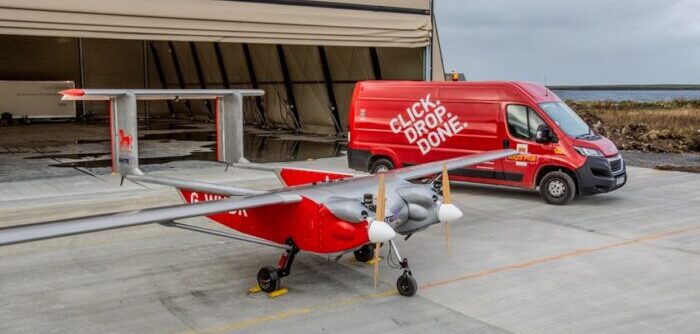Royal Mail has begun trialling scheduled, autonomous flights between Kirkwall and North Ronaldsay, Scotland.
The flights are set to run for two weeks to develop reliable, lower emission deliveries, and will be carried out entirely by an uncrewed aerial vehicle (UAV). For this reason, the trial forms a part of the Sustainable Aviation Test Environment (SATE) project and was funded by UK Research and Innovation (UKRI) via the Industrial Strategy Challenge Fund. The UAV has been designed and built by Windracers, a not-for-profit transportation provider.
The UAV is a large, twin-engine, UK-built vehicle named Ultra that can carry 100kg of mail of all shapes and sizes – equivalent to a typical delivery round – enabling the transportation of all mail bound to and from the island community of North Ronaldsay. Letters and parcels will then be delivered by the local postal operative in the usual way when they reach the island.
The trial is also designed to make delivery services for remote island communities better connected and more reliable. Because UAVs are uncrewed, and not affected by the weather or tides (like boat services), they can fly in poor weather conditions, including fog. This is expected to help Royal Mail better serve remote island communities, such as these, and complete deliveries in all weathers.
This is the third drone trial that Royal Mail has taken part in over the last year. In December 2020, Royal Mail became the first nationwide UK parcel carrier to use a drone to deliver to a remote lighthouse on the Isle of Mull in Scotland. In May 2021, Royal Mail also carried out the first UK drone parcel delivery beyond visual line of site with Windracers, and the first inter-island deliveries on the Isles of Scilly.
Nick Landon, chief commercial officer at Royal Mail, said, “This trial is designed to help us deliver to remote locations while protecting these beautiful environments. It will use the most innovative technologies to support the remote and isolated communities we serve in the greenest way possible. The trialling of drone technologies is just one of the ways we are supporting our posties, while reducing our carbon emissions.”
Charles Scales, chief executive officer at Windracers, said, “Our autonomous system will deliver an all-weather service for the community and significantly lower carbon emissions. We would like to thank our SATE project partners, HIAL, the University of Southampton and Innovate UK.”


